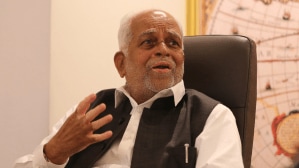Stay updated with the latest - Click here to follow us on Instagram
Barwala poultry industry plans power generation from bird waste
The poultry industry in Haryana is set for a major makeover. A US-based company is setting up a Rs 65-crore project in Barwala.
A 5.6 mega watt power plant is being set up at a cost of Rs 65 crore
The poultry industry in Haryana is set for a major makeover. A US-based company is setting up a Rs 65-crore project in Barwala,which is home to one of the largest poultry belts in the country,to generate power using hen droppings.
Where generating power from hen litter is concerned,Haryana is certainly going international. The 5.6-MW Barwala power project is being set up by the US company Indus Terra Energy Inc using technology developed by Enviro Control Ltd,a British company. And in Jind,the rural heartland of Haryana,poultry entrepreneurs Raj Kumar Mor and his brother Shamsher Singh are setting up a 1-MW power plant using Spanish technology. This,too,will use hen litter to generate power.
Green Indus Bio-Energy,a combined venture of Indus Terra,Emergent Ventures and the Barwala poultry farmers, has signed an MoU with Haryana Renewable Energy Development Agency (HAREDA) for the power project.
Rajeev Aggarwal,Country Head (India) of Indus Terra told The Indian Express that the Barwala plant is the first of its kind being set up by the company. We chose India because of the economic benefits it offers for setting up the plant. The Enviro Control technology has been successfully tried and tested at the West Virginia University in the US,which has been our scientific test-bed, he said.
Indus Terra will take the poultry waste from approximately 160 poultry farmers in the Barwala belt for the power plant. These farms collectively own about 90 lakh birds,which produce about 500 tons of litter a day. Davinder Singh Ahlawat,general secretary of Haryana Poultry Farmers Association told The Indian Express that this is a self-identified project of the poultry farmers.
The project offers major social and economic benefits. The tonnes of hen droppings that collect at the poultry farms have led to a serious menace of flies and rats in the area,due to which the local villages have been opposing us. Rats also eat the chicken feed and disturb the birds, said Ahlawat. Hen droppings will be collected at least once a week from each farm. If the farm is very big and owns about 80,000 to 1 lakh hens,the litter may be collected daily.
The poultry farmers are stake-holders in the project,and will invest one per cent of the total equity. The third partner in the project is Emergent Ventures,a global consulting and finance firm. Aggarwal said that farmers will be paid Rs 370 per ton of bird waste. They will have a one per cent share in the profit generated from the project and an additional part of the profit, he said. The power generated will be sold to Haryana Power Utilities at tariffs fixed by the Haryana Electricity Regulatory Commission.
At the plant,digesters will process hen litter,from which bio-gas will be generated. The bio-gas will be burnt in the gas engines to generate electricity. The plant is likely to come up in the second half of 2011.
Hi-tech poultry farm at Jind
For the Barwala power project,hen litter will be collected from the traditional poultry farms by labourers. The hi-tech Jind project,set up with an investment of Rs 15 crore by Mor Group of Hatcheries,is the first of its kind in north India. The farm has conveyor belts under each cage,from where hen droppings are collected daily. The farm has about 2.10 lakh birds. Chairman of the company Raj Kumar Mor says the number will go up to 3 lakh by March 2011,and 10 lakh by March 2012. By March next year,the Mor Group plans to set up a digester with an investment of Rs 50 lakh at the farm. With this technology,bio-gas can be used to generate power or be turned into Compressed Natural Gas (CNG), says Mor. The group is first experimenting with a 125-KW power project here. If it is successful,it intends to set up a 1 MW plant by March 2012.







